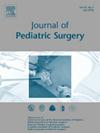利用机器学习为中低收入国家的儿科手术患者开发术后死亡率风险计算器并进行内外部验证。
IF 2.4
2区 医学
Q1 PEDIATRICS
引用次数: 0
摘要
背景:本研究的目的是为在 14 个低收入和中等收入国家的 KidsOR 中心接受治疗的儿科手术患者制定并验证一种死亡率风险算法:本研究的目的是为在14个中低收入国家的KidsOR站点接受治疗的儿科手术患者开发并验证一种死亡率风险算法:使用回顾性和前瞻性收集的KidsOR数据库(包括2018年6月至2023年6月期间在20个KidsOR站点接受治疗的患者)训练了一种SuperLearner机器学习算法,以预测出院时的术后死亡率。算法性能通过内部-外部交叉验证的AUC和校准进行评估:在 23905 名符合条件的患者中,21703 名有出院状态记录的患者被纳入分析,术后死亡率为 3.1%(671 例死亡事件)。经交叉验证性能最佳的候选算法是极梯度提升模型。交叉验证的 AUC 为 0.945(95% CI 0.936 至 0.954),交叉验证校准斜率和截距分别为 1.01(95% CI 0.96 至 1.06)和 0.05(95% CI -0.10 至 0.21)。对于在除一个站点外的所有站点训练并在至少有 25 例死亡事件的站点进行评估的超级学习者模型,总体外部验证 AUC 为 0.864(95% CI 0.846 至 0.882),校准斜率和截距分别为 1.03(95% CI 0.97 至 1.09)和 1.18(95% CI 0.98 至 1.39):KidsOR术后死亡风险算法具有出色的交叉验证判别能力和较强的交叉验证校准能力。在所有外部验证地点,在其余地点训练的超级学习者模型的判别能力都很出色,但在新地点使用前可能需要重新校准。该模型有可能为临床实践提供依据,并指导全球儿童健康中心的资源分配:观察研究,III 级。本文章由计算机程序翻译,如有差异,请以英文原文为准。
Development and Internal-External Validation of a Post-Operative Mortality Risk Calculator for Pediatric Surgical Patients in Low- and Middle- Income Countries Using Machine Learning
Background
The purpose of this study was to develop and validate a mortality risk algorithm for pediatric surgery patients treated at KidsOR sites in 14 low- and middle-income countries.
Methods
A SuperLearner machine learning algorithm was trained to predict post-operative mortality by hospital discharge using the retrospectively and prospectively collected KidsOR database including patients treated at 20 KidsOR sites from June 2018 to June 2023. Algorithm performance was evaluated by internal-external cross-validated AUC and calibration.
Findings
Of 23,905 eligible patients, 21,703 with discharge status recorded were included in the analysis, representing a post-operative mortality rate of 3.1% (671 mortality events). The candidate algorithm with the best cross-validated performance was an extreme gradient boosting model. The cross-validated AUC was 0.945 (95% CI 0.936 to 0.954) and cross-validated calibration slope and intercept were 1.01 (95% CI 0.96 to 1.06) and 0.05 (95% CI -0.10 to 0.21). For Super Learner models trained on all but one site and evaluated in the holdout site for sites with at least 25 mortality events, overall external validation AUC was 0.864 (95% CI 0.846 to 0.882) with calibration slope and intercept of 1.03 (95% CI 0.97 to 1.09) and 1.18 (95% CI 0.98 to 1.39).
Interpretation
The KidsOR post-operative mortality risk algorithm had outstanding cross-validated discrimination and strong cross-validated calibration. Across all external validation sites, discrimination of Super Learner models trained on the remaining sites was excellent, though re-calibration may be necessary prior to use at new sites. This model has the potential to inform clinical practice and guide resource allocation at KidsOR sites world-wide.
Type of Study and Level of Evidence
Observational Study, Level III.
求助全文
通过发布文献求助,成功后即可免费获取论文全文。
去求助
来源期刊
CiteScore
1.10
自引率
12.50%
发文量
569
审稿时长
38 days
期刊介绍:
The journal presents original contributions as well as a complete international abstracts section and other special departments to provide the most current source of information and references in pediatric surgery. The journal is based on the need to improve the surgical care of infants and children, not only through advances in physiology, pathology and surgical techniques, but also by attention to the unique emotional and physical needs of the young patient.

 求助内容:
求助内容: 应助结果提醒方式:
应助结果提醒方式:


